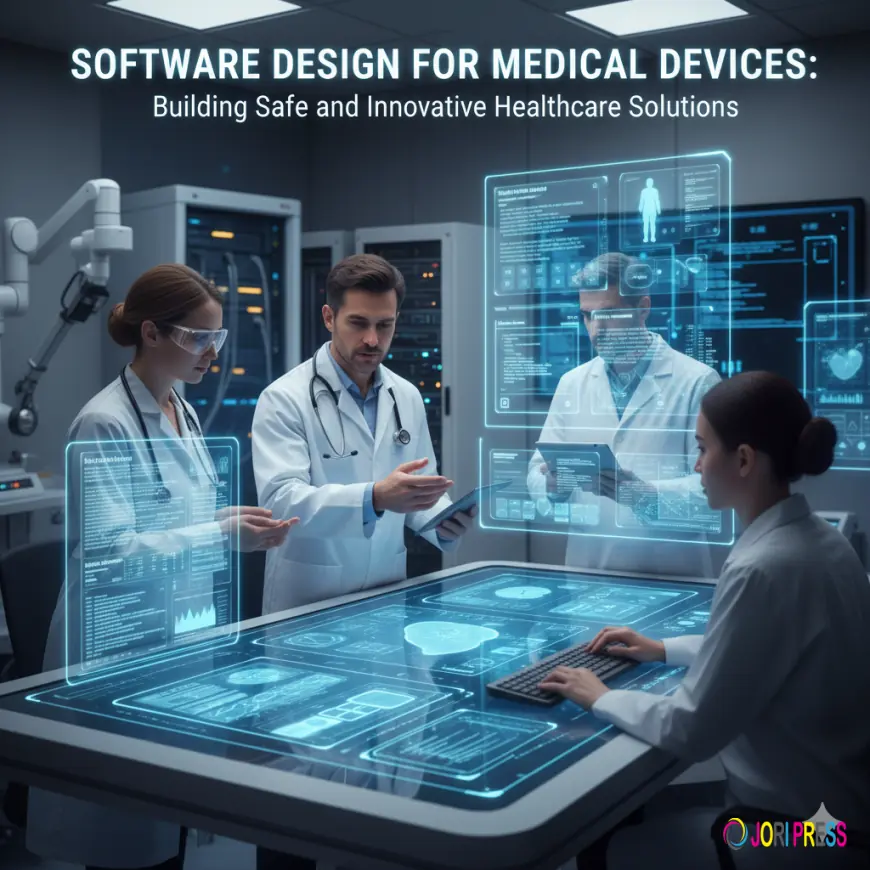Software Design for Medical Devices: Building Safe and Innovative Healthcare Solutions
In today’s digital-first healthcare landscape, medical devices are becoming increasingly intelligent, connected, and software-driven. From wearable monitors to advanced surgical systems, the heart of their functionality lies in software design for medical devices.

In today’s digital-first healthcare landscape, medical devices are becoming increasingly intelligent, connected, and software-driven. From wearable monitors to advanced surgical systems, the heart of their functionality lies in software design for medical devices. A well-structured software design not only ensures device performance but also safeguards patient safety, compliance, and reliability.
Why Software Design Matters in Medical Devices
Unlike general-purpose applications, software in medical devices operates in highly regulated, safety-critical environments. The stakes are high: even the smallest error could compromise patient health. This is why thoughtful, compliant, and user-centric software design is essential.
Key reasons software design is crucial:
· Patient Safety: Design must eliminate risks and ensure predictable device behavior.
· Regulatory Compliance: Strict guidelines from FDA, IEC 62304, and ISO standards govern how medical device software should be developed.
· Reliability: Devices must operate consistently in critical healthcare scenarios.
· Interoperability: Software should integrate seamlessly with hospital systems, wearables, and electronic health records (EHRs).
Principles of Effective Software Design for Medical Devices
1. User-Centered Approach
Designing with doctors, nurses, and patients in mind ensures the software is intuitive and reduces the risk of misuse.
2. Modular and Scalable Architecture
A modular design allows updates, improvements, and regulatory compliance adjustments without redesigning the entire system.
3. Built-in Security
Cybersecurity should be embedded at every stage of design to protect sensitive patient data from breaches and attacks.
4. Compliance-First Development
Following standards such as IEC 62304 for software lifecycle processes ensures devices meet international safety requirements.
5. Rigorous Testing and Validation
Continuous testing—from unit to system-level—validates that the software works as intended under all conditions.
Emerging Trends in Software Design for Medical Devices
· Artificial Intelligence & Machine Learning: Driving predictive diagnostics, automated imaging, and personalized treatment plans.
· Cloud-Connected Devices: Enabling real-time data sharing between patients and providers.
· Wearable Integration: Designing lightweight, low-power software for consumer-friendly health monitoring devices.
· Agile Development: Accelerating innovation while maintaining compliance through iterative design cycles.
Challenges in Medical Device Software Design
While innovation drives progress, medical device software design faces unique challenges:
· Balancing rapid innovation with strict regulatory timelines
· Ensuring cross-platform compatibility across diverse healthcare systems
· Protecting against evolving cybersecurity threats
· Managing costs while maintaining high design quality
The Future of Software Design in Healthcare
As healthcare shifts toward digital, connected ecosystems, software design for medical devices will play a central role in shaping the industry’s future. With advancements in AI, IoT, and secure cloud infrastructure, next-generation medical devices will empower clinicians with real-time insights and patients with more control over their health.
Conclusion
Great medical devices start with great software design. By prioritizing safety, compliance, usability, and innovation, developers can build solutions that not only meet regulatory standards but also transform patient outcomes. In the ever-evolving world of healthcare, thoughtful software design is not just an advantage—it’s a necessity.
What's Your Reaction?
 Like
0
Like
0
 Dislike
0
Dislike
0
 Love
0
Love
0
 Funny
0
Funny
0
 Angry
0
Angry
0
 Sad
0
Sad
0
 Wow
0
Wow
0



















































